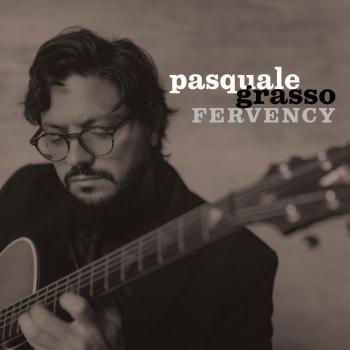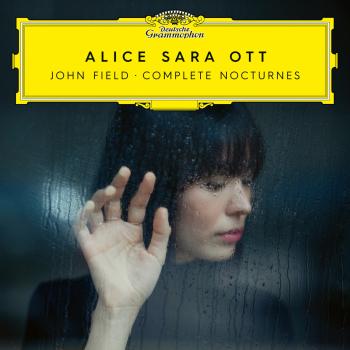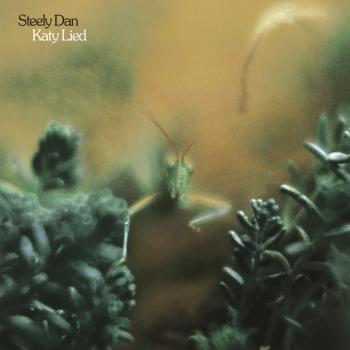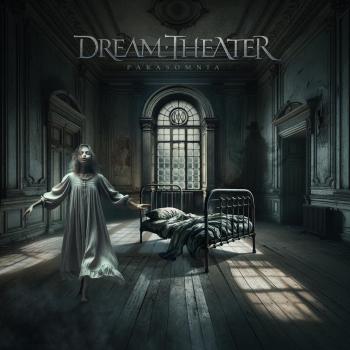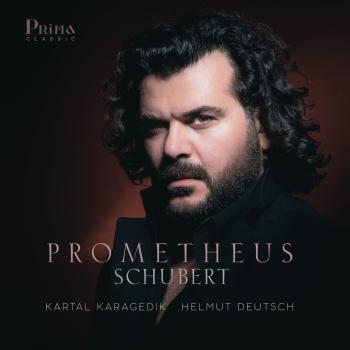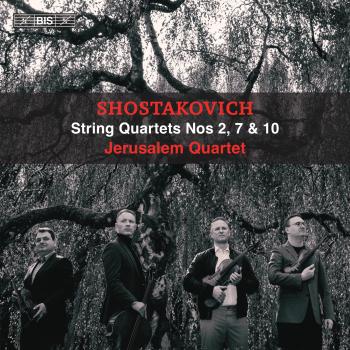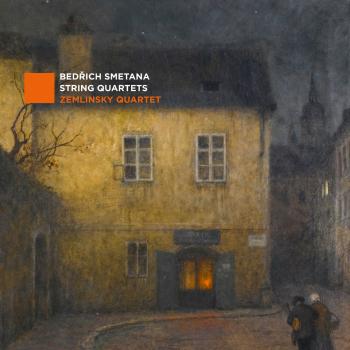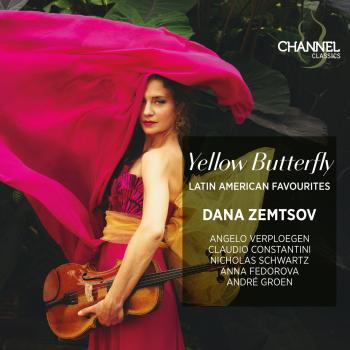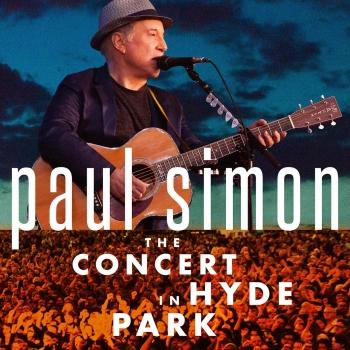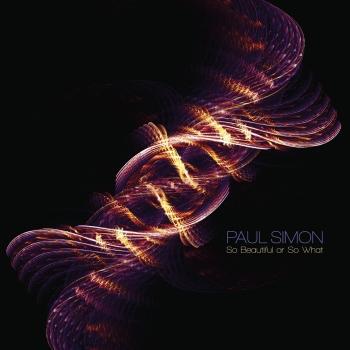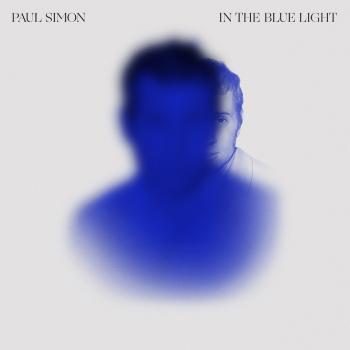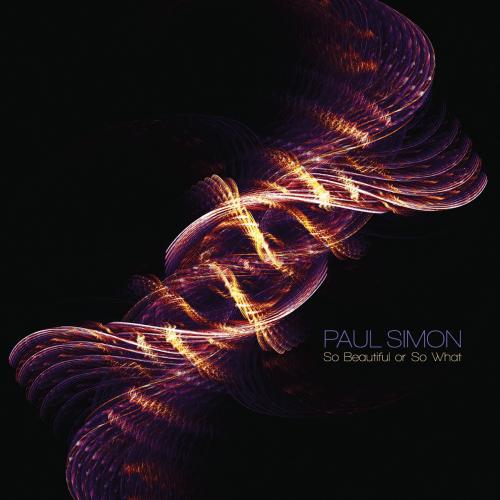
So Beautiful or So What Paul Simon
Album info
Album-Release:
2011
HRA-Release:
10.08.2018
Album including Album cover
I`m sorry!
Dear HIGHRESAUDIO Visitor,
due to territorial constraints and also different releases dates in each country you currently can`t purchase this album. We are updating our release dates twice a week. So, please feel free to check from time-to-time, if the album is available for your country.
We suggest, that you bookmark the album and use our Short List function.
Thank you for your understanding and patience.
Yours sincerely, HIGHRESAUDIO
- 1 Getting Ready for Christmas Day 04:06
- 2 The Afterlife 03:40
- 3 Dazzling Blue 04:32
- 4 Rewrite 03:49
- 5 Love and Hard Times 04:09
- 6 Love Is Eternal Sacred Light 04:02
- 7 Amulet 01:36
- 8 Question for the Angels 03:49
- 9 Love & Blessings 04:18
- 10 So Beautiful or so What 04:07
Info for So Beautiful or So What
“Dieses außergewöhnliche, wohldurchdachte, oftmals fröhliche Album verdient es, als eine von Paul Simons feinsten musikalischen Leistungen anerkannt zu werden.” (Elvis Costello)
Nicht nur Elvis Costello, der bekanntlich selber einiges vom Schreiben exzellenter Songs versteht, reagierte auf Paul Simons neues Album “So Beautiful Or So What” mit spontaner Begeisterung. Auch die ausgewählten Kritiker, die vorab hineinhören durften, waren voll des Lobes. Robert Hilburn, Popmusikkritiker der Los Angeles Times, meinte etwa unumwunden: “…es ist locker sein bestes Album seit ‘Graceland’.”
“So Beautiful Or So What” ist Paul Simons zwölftes Studioalbum und zugleich das erste für sein neues Label Hear Music/Concord Music. Für das gemeinsam mit Phil Ramone produzierte Album schrieb Simon zehn neue Songs, die man nicht so schnell wieder aus dem Ohr bekommen wird. Anders als bei den Alben, die er seit Mitte der 1980er Jahre herausbrachte, orientierte er sich beim Schreiben der Songs aber nicht in erster Linie an den Grooves, sondern richtete sein Augenmerk — wie in den 1970er Jahren, als er das erste Mal mit Ramone zusammenarbeitete — stärker auf die Harmonien und den Songaufbau.
“Seit ‘Graceland’ habe ich alle meine Platten so gemacht, dass ich entweder zuerst die Stücke schrieb oder die perkussive Basis festlegte”, vertraute Paul Simon dem Rolling Stone an. “Diesmal war eine Gitarre auf meinem Schoß der Stimulus. Das führt mich zurück zu den Zeiten von ‘Still Crazy After All These Years’ oder ‘Something So Right’.”
Das Album beginnt mit einer Nummer, die trotz ihres Titels eigentlich kein Weihnachtslied ist, sondern ein Stück für alle Jahreszeiten: “Getting Ready For Christmas Day” gibt mit seinem Text, der trockenen Witz und (persönliches wie globales) politisches Bewusstsein kombiniert, sowie seiner ungemein eingängigen Melodie die weitere Marschroute des Albums vor. Gleich im Anschluss sinniert Simon in “The Afterlife”, das er mit einem entspannten Soca-Beat unterlegt hat, darüber nach, wie wohl “das Leben danach” aussieht — so viel sei verraten: vor bürokratischem Ärger scheint man auch dann nicht sicher zu sein. Im blues-rockigen “Love Is Eternal Sacred Light” setzt er sich mit den Kräften von Gut und Böse auseinander, während er im nachdenklichen “Questions For The Angels” die Geschichte eines religiösen Pilgerers und der Obdachlosen erzählt, die durch die Straßen Brooklyns wandern. Im Titelstück überrascht Simon die Hörern dann mit einem Chicken-Gumbo-Rezept.
“So Beautiful Or So What” bietet eine erstaunlich homogene Mixtur aus Pop und Bluegrass mit afrikanischen und indischen Musikeinflüssen. Zwei der Songs nahm Simon mit Doyle Lawson und seiner Bluegrass-Band Quicksilver auf. Den Großteil des Materials aber spielte der Künstler, der hier trotz seiner fast schon 70 Jahre unglaublich jung und vital klingt, mit Gitarrist Vincent Nguini und Perkussionist Steve Shehan ein. Beide gehören schon seit gut zehn Jahren zu Simons innerem musikalischen Zirkel. Die elektronischen Drums spielte Schlagzeuger Chris Bear von der New Yorker Indie-Rock-Band Grizzly Bear ein, die Paul Simon zu ihren Einflüssen zählt. Über ein Jahr lang feilte Paul Simon an den Songs, bis sie schließlich so waren, wie sie ihm vorschwebt hatten. Und die Mühe hat sich zweifelsfrei mehr als gelohnt. Ihn selbst erinnert “So Beautiful Or So What” an sein erstes Soloalbum “Paul Simon”, mit dem er 1972 im Sturm die Charts eroberte und sich zugleich als einer der besten Songwriter der amerikanischen Popszene etablierte. Jetzt beweist Paul Simon, dass er bis heute nichts verlernt hat und immer noch magische Songs zu schreiben versteht.
"Das organischste und schönste Simon-Werk seit Langem." (Rolling Stone)
"Er gibt den verehrten Folk-Troubadour (,,Love And Hard Times") und anerkannten Weltmusik-Handlungsreisenden (bei ,,Rewrite" etwa ist Indien sein Ziel), beweist sich als selbstironischer Hit-Songwriter (,,The Af- ' terlife") und meditiert mit sanftem Akustik-Jazz-flow über .Questions For The Angels"." (stereoplay)
"Ein angenehmes,,déjà vu"-Erlebnis ist das neue Album auch insofern, als die an dem , Projekt beschäftigten Cracks entschieden Wert auf großen Wohlklang legten." (stereo
"Am vertrautesten wirken das schwungvolle Soca-Stück ,,Afterlife" und das verträumt zur Percussion dahinfließende ,,Dazzling Blue". ,,Love And Hard Times" erinnert an die Akustikballaden der 70er-Jahre. Ansonsten aber lässt der Weltreisende die Zügel locker ..." (Audio)
„Abhaken ist nicht …Simon klingt mit 69 Jahren frischer und ideenreicher denn je … Mit „So Beautiful Or So What” haut Simon ein dermassen überzeugendes Album zwischen Pop, Bluegrass und Folk heraus …“ (Stern)
“Dieses außergewöhnliche, wohldurchdachte, oftmals fröhliche Album verdient es, als eine von Paul Simons feinsten musikalischen Leistungen anerkannt zu werden.” (Elvis Costello)
Produced by Phil Ramone, Paul Simon
Paul Simon
is one of the most successful and respected songwriters of the second half of the 20th century. Rising to fame in the mid-'60s, Simon's songs were mature and literate, but also melodically engaging, and spoke to the concerns and uncertainties of a generation.
As the 1960s gave way to the '70s and '80s, Simon's work tended to focus on the personal rather than the larger world, but he also expanded his musical palette, and helped introduce many rock and pop fans to world music. Paul Frederic Simon was born in Newark, New Jersey on October 13, 1941.
His father, Louis Simon, was an educator who also led a small jazz combo, while his mother, Belle Simon, taught English; when Paul was a few months old, they moved from Newark to Queens, New York. Paul grew up with a passion for baseball and music, particularly jazz and folk, and as he entered his teens, he developed a taste for the doo wop and R&B sounds that were a staple of Alan Freed's radio broadcasts, as well as first-generation rockabillies such as Elvis Presley, Jerry Lee Lewis, and Carl Perkins.
When Simon was 11 years old, he met Art Garfunkel, and the two became fast friends who discovered they shared an interest in music. Paul and Art formed a harmony duo in the style of their heroes the Everly Brothers, and made their stage debut at a junior-high talent show.
By the time they were enrolled at Forest Hills High School, the two were calling themselves Tom & Jerry (Art was Tom Graph, Paul was Jerry Landis), and they filled their spare time playing teen dances and parties. In 1955, the two wrote a song together, "The Girl for Me," which Simon registered for copyright with the Library of Congress.
In 1957, Tom & Jerry were cutting a demo acetate of Simon's song "Hey Schoolgirl" when the president of a small record company (ironically named Big Records) happened by the studio. The label head liked what he heard, and "Hey Schoolgirl" b/w "Dancin' Wild" was released in the fall of 1957.
The record rose to number 52 on the Billboard pop singles charts, and scored Tom & Jerry an appearance on [muzeItalic]American Bandstand[/muzeItalic], but while they would cut a number of follow-up releases, "Hey Schoolgirl" was destined to be Tom & Jerry's only hit. By March 1958, Simon was already looking toward a solo career, cutting a single, "True or False" b/w "Teen Age Fool," under the name True Taylor.
Jerry Landis also landed his own record deal, releasing his debut single, "Anna Belle" b/w "Loneliness," in 1959, while Simon also worked with a studio group called the Cosines, who specialized in cutting demos for songwriters. (Another member of the combo was Carole Klein, who would soon enjoy a successful career of her own as Carole King.) By the end of the decade, Paul and Art were both enrolled in college, and Tom & Jerry took a back seat to academics, though Simon would record occasional sessions and wrote songs for others.
In 1961, Simon teamed up with a handful of vocalists to form a group called Tico & the Triumphs; the group cut a single, "Motorcycle" b/w "I Don't Believe Them," which barely broke into the Billboard singles charts, making Number 99 for one week, but received extensive airplay in Baltimore and became a local hit in the Charm City. "Motorcycle" was released by Amy Records, who soon turned to Simon to write and produce material for several of their artists, including Ritchie Cordell, the Fashions, Dottie Daniels, and Jay Walker & the Pedestrians.
Simon also found time to cut another Jerry Landis single, and "The Lone Teen Ranger" spent three weeks on the Billboard charts in early 1963, peaking at number 97. In the early '60s, the folk revival swept New York City, and a new breed of singers and songwriters introduced a new approach to the craft of creating tunes.
Simon, who had been studying English literature, was influenced and encouraged by the new breed of folkies, and in 1963 he re-teamed with Art Garfunkel, this time using their real names and performing the more topical songs Simon was writing. Simon & Garfunkel started playing Greenwich Village folk clubs, and they scored a deal with Columbia Records, releasing their first album, Wednesday Morning, 3 AM, in the fall of 1964.
The album was initially a flop, and Simon headed to England, where he made the rounds of folk clubs, recorded some BBC sessions, and even cut a solo album, The Paul Simon Songbook, which was released only in the UK. Simon also co-wrote a few pop tunes with Bruce Woodley of the Seekers, one of which, "Red Rubber Ball," would become a big hit for the Cyrkle.
In late 1965, Tom Wilson, who produced the Wednesday Morning, 3 AM album, learned that one of the songs from the LP, "The Sound of Silence," was getting scattered radio airplay, and he struck upon the idea of dubbing a rock & roll rhythm section over the acoustic track and issuing it as a single. The strategy worked: the new version of "The Sound of Silence" was a big hit, and Simon & Garfunkel quickly re-formed, cutting the album Sounds of Silence, which was released in 1966 and spawned the singles "I Am a Rock" and "Kathy's Song." Simon & Garfunkel would enjoy impressive success over the next several years, and were one of the few acts from the early-'60s folk revival that would enjoy success with acoustic-based music during the psychedelic era, thanks in large part to Simon's songwriting.
But while 1970's Bridge Over Troubled Water was a massive commercial and critical success (and a superb reflection of the end-of-the-decade Zeitgeist of the day), long-simmering creative differences between Simon and Garfunkel came to a head while making the album, and a hiatus from collaborating became a proper breakup when Simon released his self-titled solo album in 1972. Paul Simon featured two hit singles, "Mother and Child Reunion" and "Me and Julio Down by the Schoolyard," and found Simon experimenting with reggae and Latin music, as well as polished soft rock.
Released in 1973, There Goes Rhymin' Simon was a more ambitious follow-up, sounding largely optimistic and dipping its toes into gospel and New Orleans jazz as well as R&B-based rock and pop. In 1975, Simon released Still Crazy After All These Years, an album informed by his divorce from his first wife, Peggy Harper.
Still Crazy included the song "My Little Town," which reunited Simon with Art Garfunkel for the first time since Bridge Over Troubled Water. Simon's next project proved to have a long gestation period; he wrote a screenplay about a musician struggling to save his marriage and his career, and penned a set of songs to accompany it.
Simon also starred in the subsequent film, and while [muzeItalic]One Trick Pony[/muzeItalic] wasn't his first bit of film acting (he played a small but memorable role in Woody Allen's [muzeItalic]Annie Hall[/muzeItalic]), he didn't fare well alongside a cast of seasoned professionals when the movie debuted in 1980. One Trick Pony's soundtrack album (his first album for Warner Bros.
after a long working relationship with Columbia) spawned the hit single "Late in the Evening," but otherwise proved to be a disappointment in terms of sales. In September 1981, Simon & Garfunkel played a massive reunion concert in New York's Central Park, which led to a brief reunion tour.
The Central Park show was released as a live album that was a major commercial success, and the duo made plans to record a new album. But Simon and Garfunkel found themselves at odds in the studio, and Simon's next album, 1983's Hearts and Bones, featured no contributions from Garfunkel.
The album sold poorly, and by Simon's own admission he was running short on inspiration when he heard an album of "township jive" by the South African group the Boyoyo Boys. Fascinated by the eclectic blend of creative elements, Simon began creating an album inspired by South African pop, recorded primarily in Johannesburg with a band of South African musicians.
The result was 1986's Graceland, which became an unexpected smash hit, spawning several hits singles, introducing an international audience to South African rhythms, and prompting a renewed dialogue about the nation's repressive apartheid regime. (The album also generated a certain amount of controversy, as some believed the recording sessions violated a United Nations-led cultural boycott against South Africa; also, several members of the group Los Lobos, who appeared on the album, claimed Simon lifted their melody for the tune "All Around the World, or the Myth of Fingerprints" without giving them songwriting credit.) Simon turned to Brazilian music for inspiration on his next album, 1990's The Rhythm of the Saints, which also incorporated a number of the South African players who contributed to Graceland.
If not as successful as Graceland, The Rhythm of the Saints still fared quite well with fans and critics, and the two albums reestablished Simon as a vital, contemporary artist. After releasing a live album from the tour in support of The Rhythm of the Saints, Simon retreated to work on another unusual project, a Broadway musical called [muzeItalic]The Capeman[/muzeItalic], which was based on the true story of Salvador Agron, a Latino gang member and convicted murderer turned poet and activist. Simon wrote the book for [muzeItalic]The Capeman[/muzeItalic] in collaboration with Derek Walcott, and composed a set of new songs for the show.
owever, the production proved difficult and the play, which opened in 1998, received poor reviews and closed after just 68 performances due to slow ticket sales. (A revised version of the show was staged in 2010, and received significantly better notices.) An album of Simon's interpretations of the show's songs was issued, but was only a modest success; the original cast recording received a belated digital release in 2006.
Stung by the disappointing response to [muzeItalic]The Capeman[/muzeItalic], Simon returned to the studio in 2000 to record You're the One, an album that suggested a compromise between the African and Latin sounds he'd embraced and the more intimate approach of his early work. Two years later, Simon once again reunited with Art Garfunkel for a concert tour, and a live album, Old Friends: Live on Stage, was released in 2004.
Simon returned in 2006 with Surprise, which found him working with an unlikely producer, Brian Eno. Released in 2011, So Beautiful or So What captured Simon returning to a more organic songwriting style than he'd employed since Graceland, though the tenor of the lyrics confirmed he was still keenly aware of the sounds and ideas of the present day.
The album was also his first release for Hear Music; the same label released 2012's Live in New York City, taken from a special intimate hometown concert from the tour in support of So Beautiful. (Mark Deming) (Source: www.legacyrecordings.com)
This album contains no booklet.

